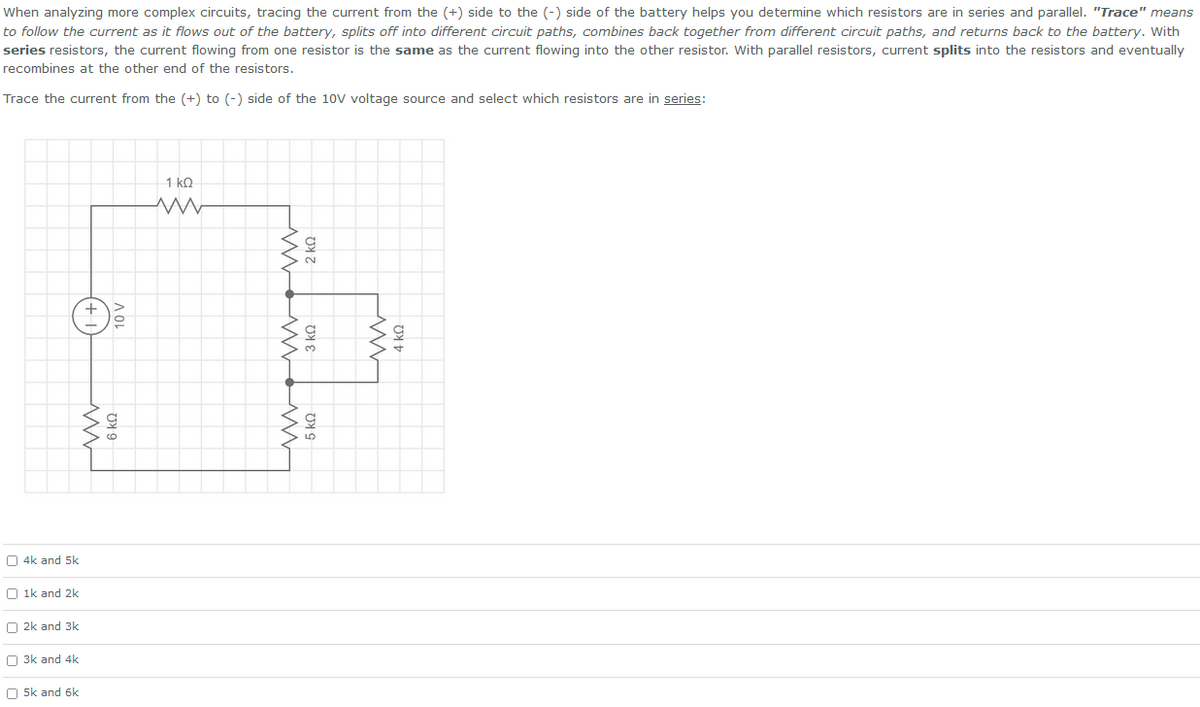When analyzing more complex circuits, tracing the current from the (+) side to the (-) side of the battery helps you determine which resistors are in series and parallel. "Trace" means to follow the current as it flows out of the battery, splits off into different circuit paths, combines back together from different circuit paths, and returns back to the battery. With series resistors, the current flowing from one resistor is the same as the current flowing into the other resistor. With parallel resistors, current splits into the resistors and eventually recombines at the other end of the resistors. Trace the current from the (+) to (-) side of the 10V voltage source and select which resistors are in series: 4k and 5k 1k and 2k 2k and 3k ww 3k and 4k 5k and 6k 6 K$2 1 ΚΩ www www XZ www 3 ΚΩ g ww 4 KQ
When analyzing more complex circuits, tracing the current from the (+) side to the (-) side of the battery helps you determine which resistors are in series and parallel. "Trace" means to follow the current as it flows out of the battery, splits off into different circuit paths, combines back together from different circuit paths, and returns back to the battery. With series resistors, the current flowing from one resistor is the same as the current flowing into the other resistor. With parallel resistors, current splits into the resistors and eventually recombines at the other end of the resistors. Trace the current from the (+) to (-) side of the 10V voltage source and select which resistors are in series: circuit (2).png Group of answer choices 4k and 5k 1k and 2k 2k and 3k 3k and 4k 5k and 6k

Step by step
Solved in 2 steps with 2 images









